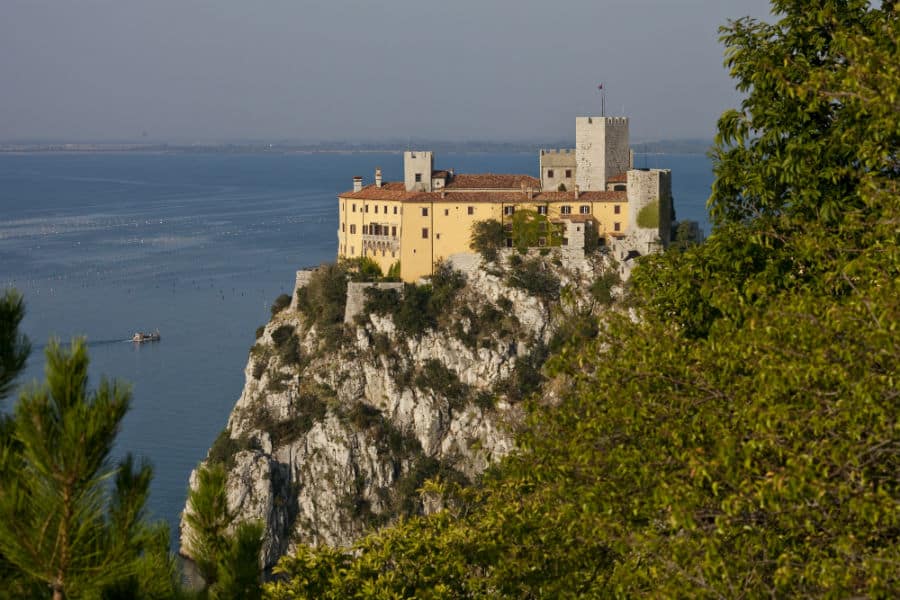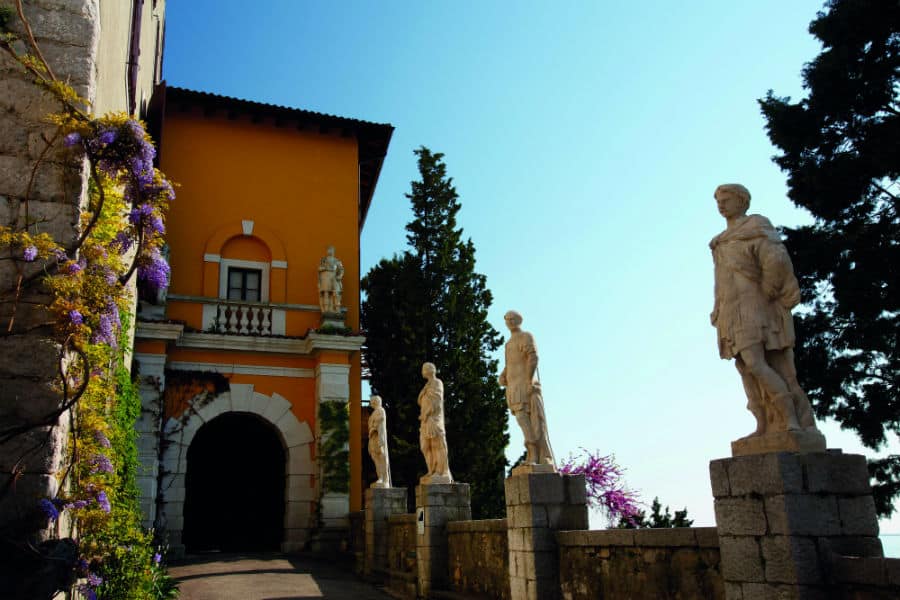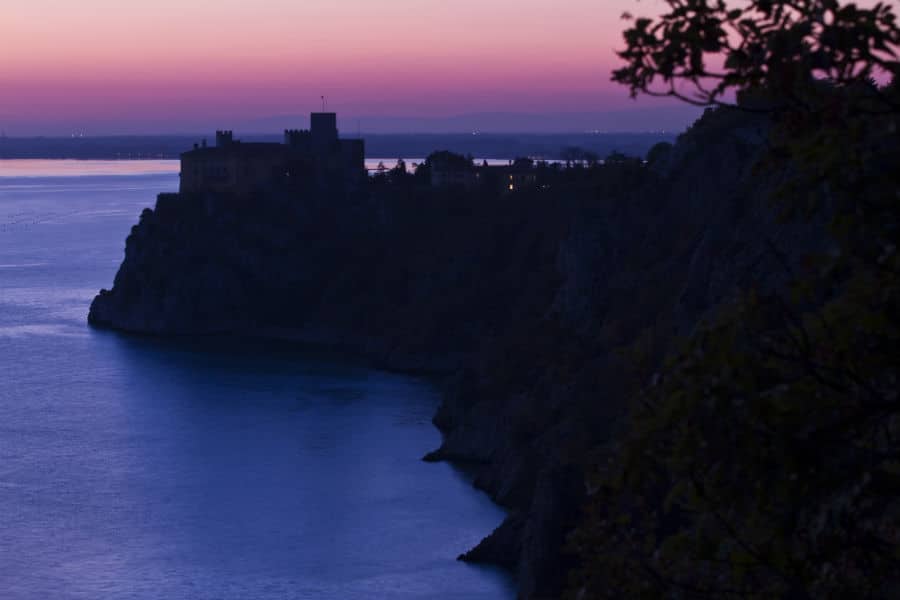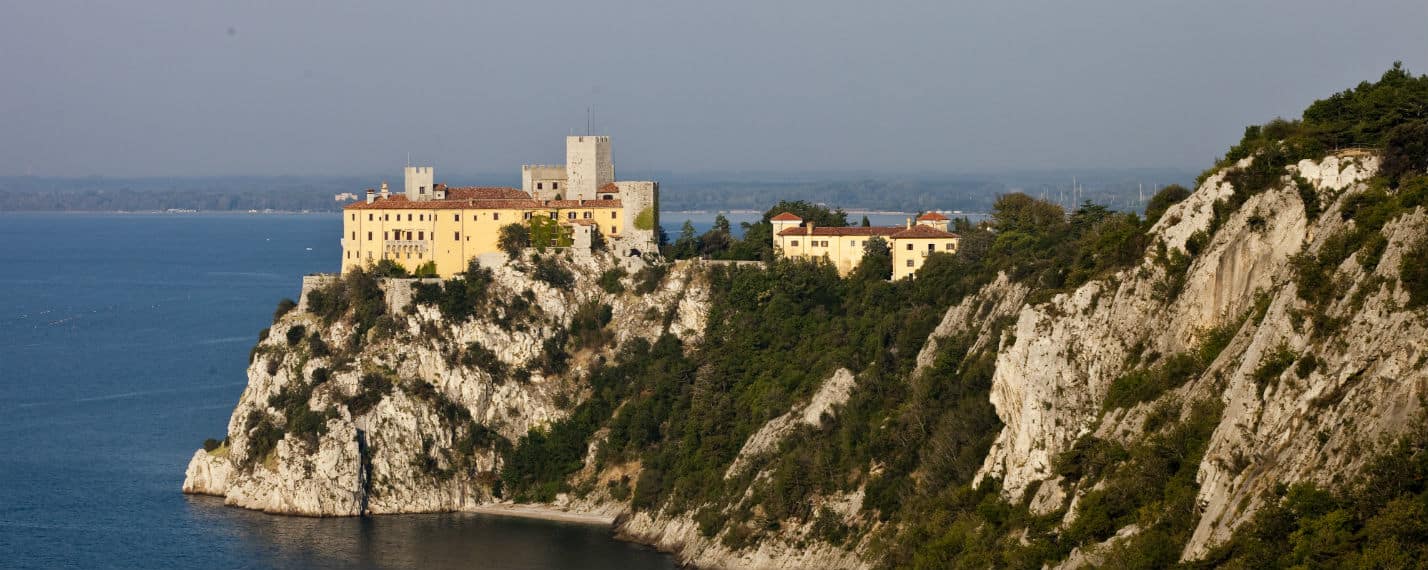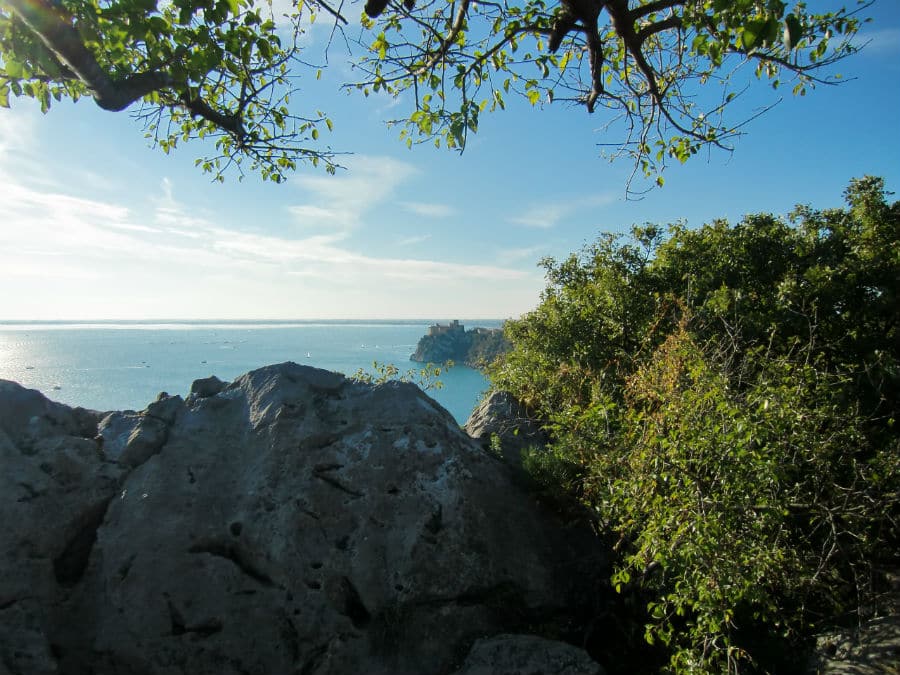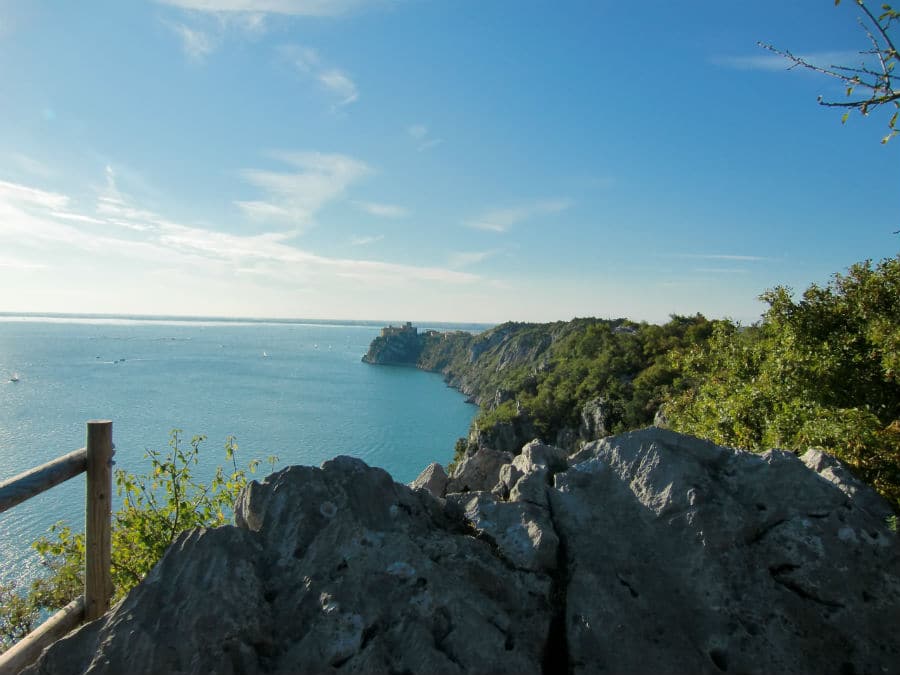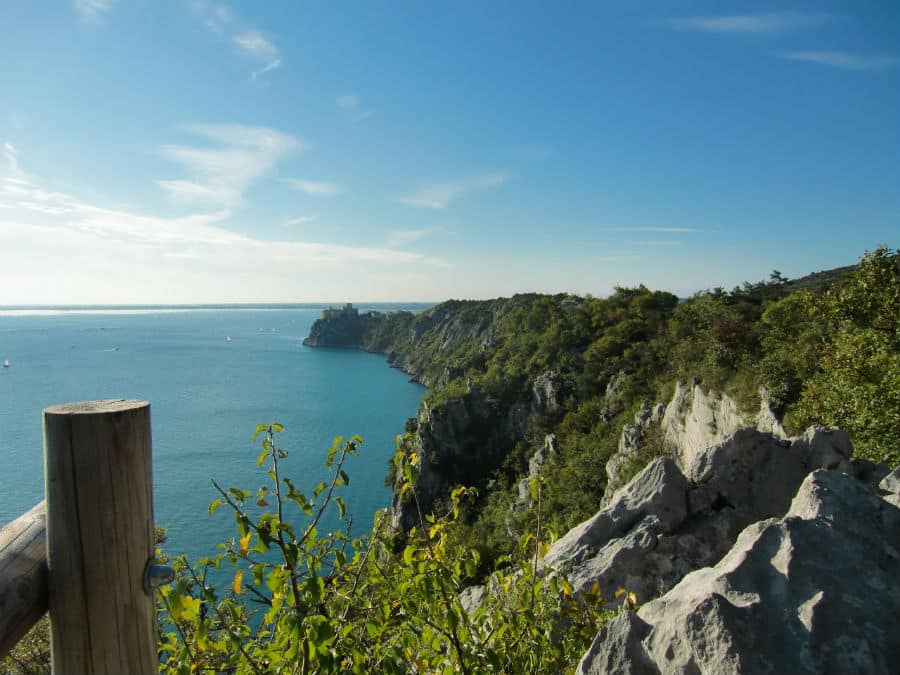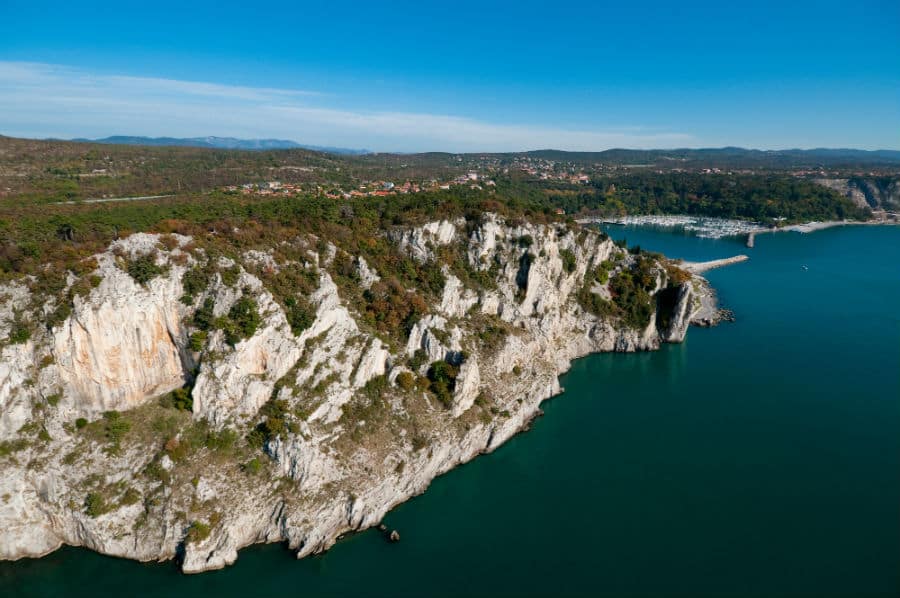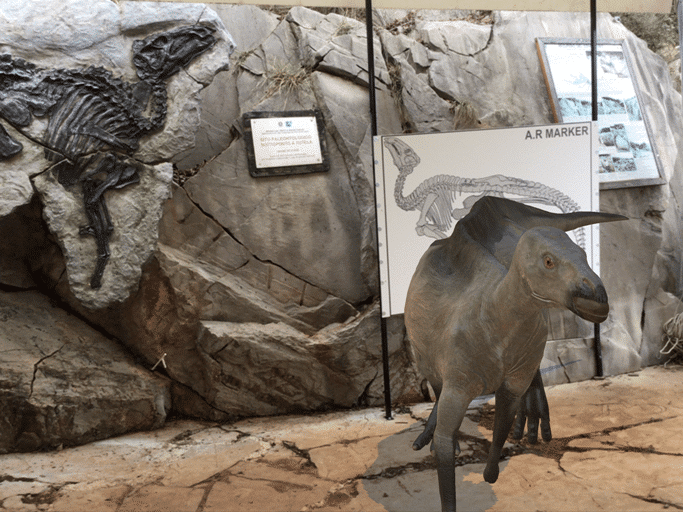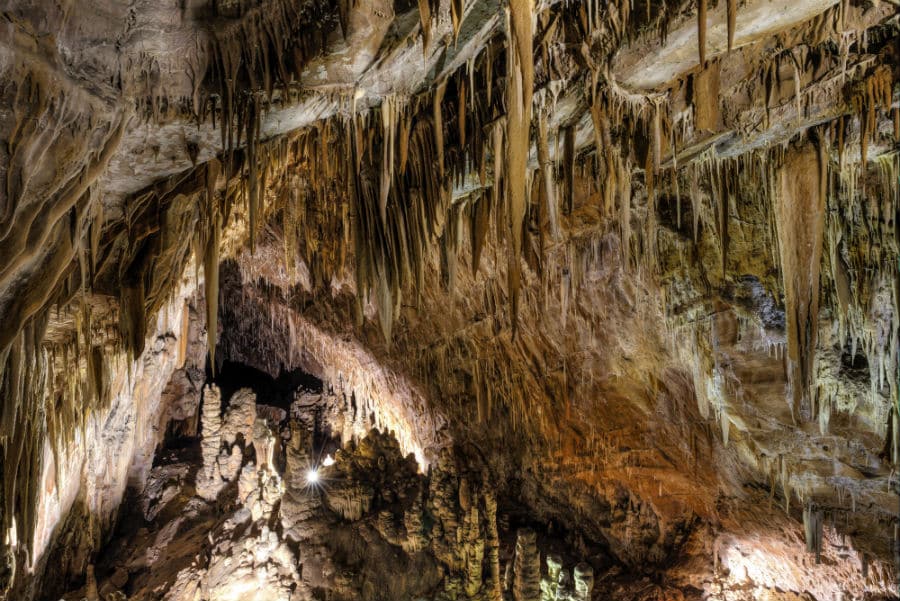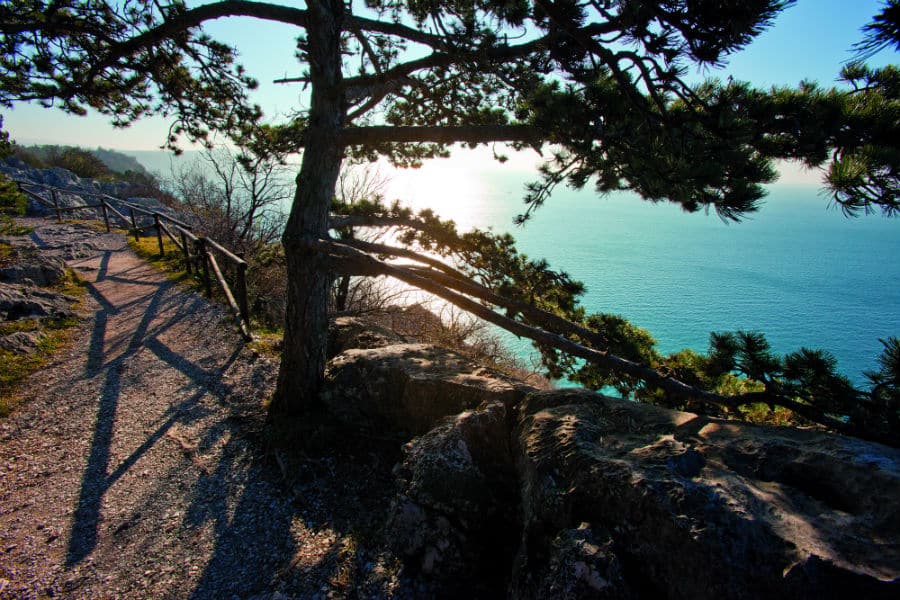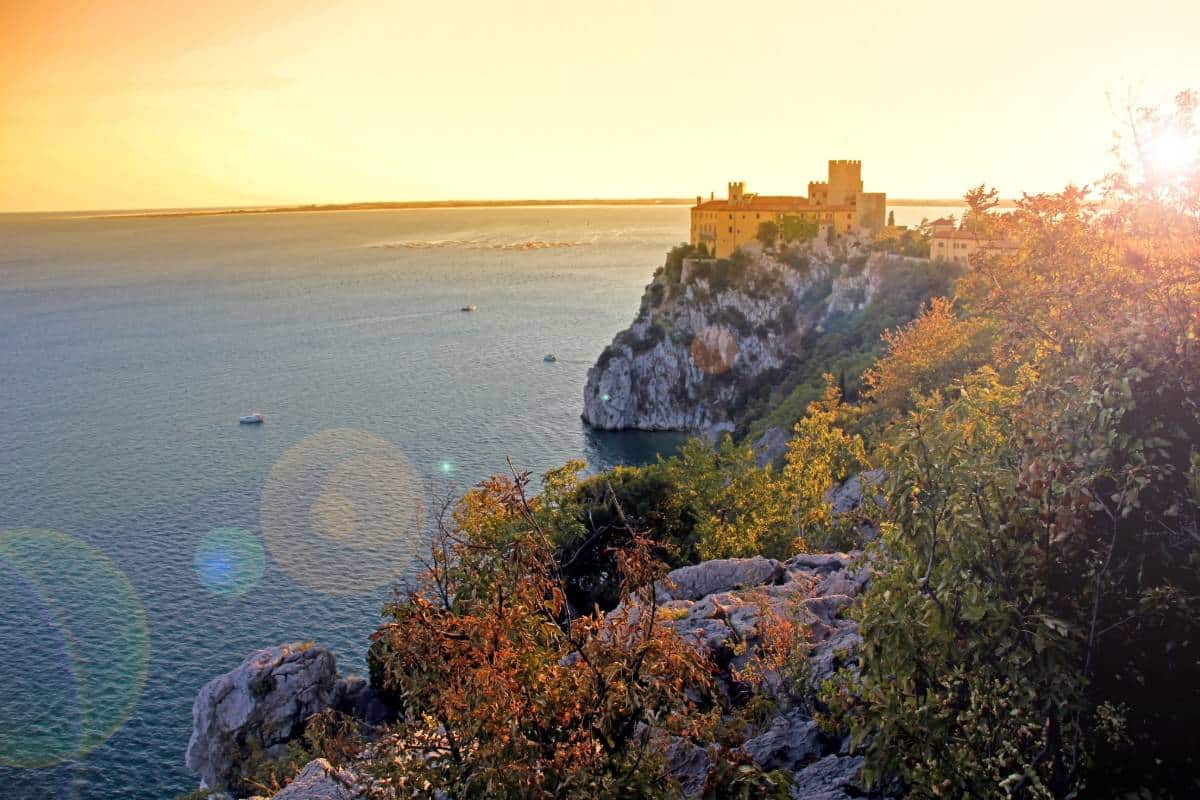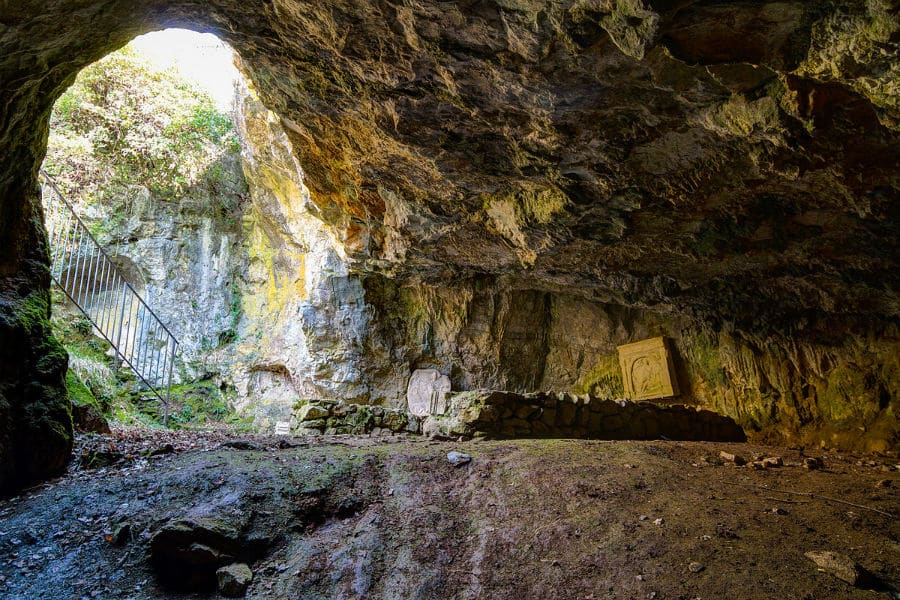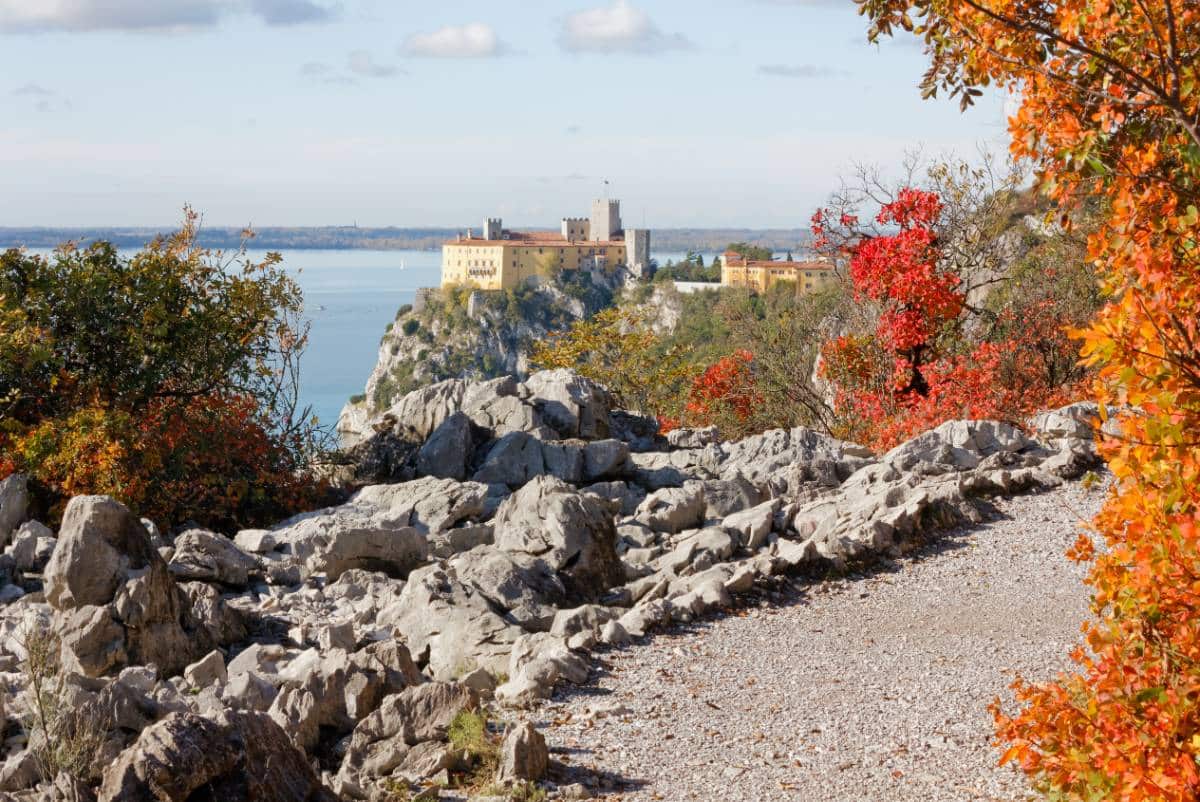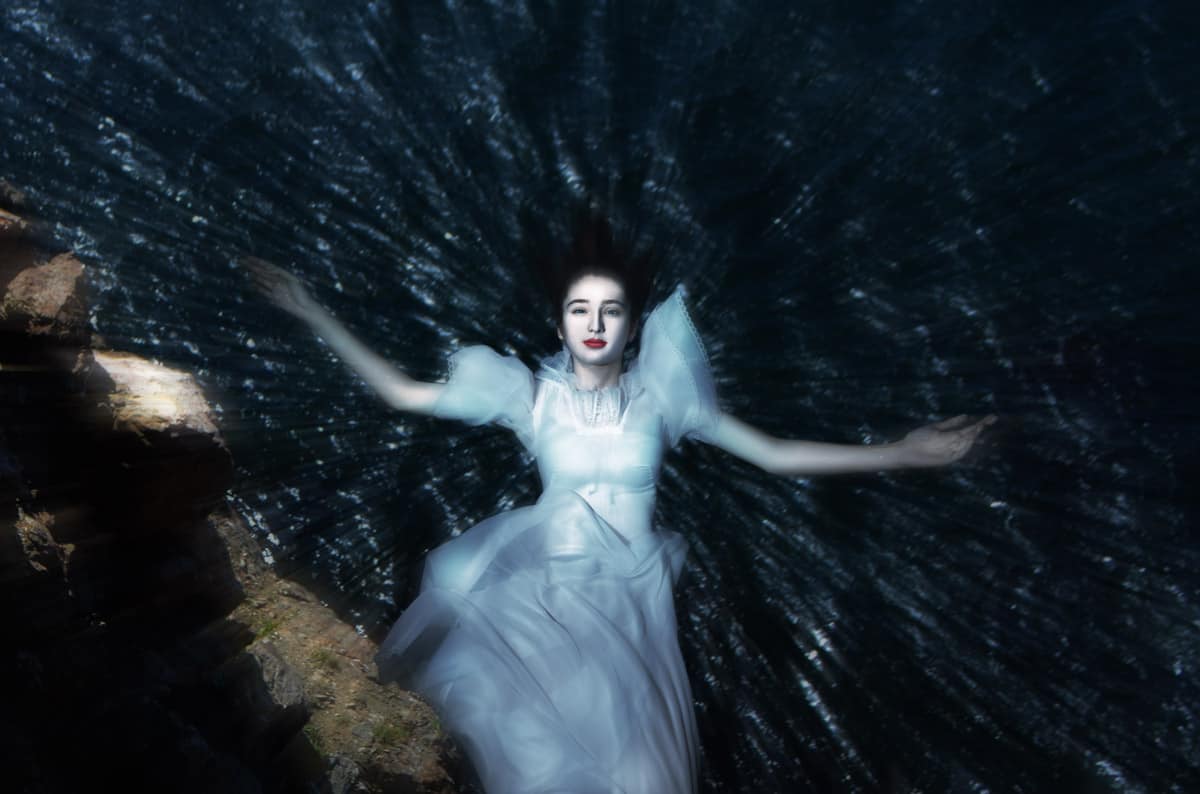The ancient seaside village of Duino/Devin (Duìn in Trieste dialect, Devin in Slovenian and Tybein in German) is situated between the southern slope of Mount Ermada/Grmada (323 m.) and the white cliffs plunging into the Adriatic.
Compounding this beautiful village are the romantic ruins of the old castle, the imposing bulk of the new castle with its halls, park, bunker and breathtaking views.
The manor, inhabited by the princes of the Tower and Tasso, can be visited, along with its elegant garden. Suggestive is "l'ulca," the narrow lane that from the church continues along the castle walls surrounded by picturesque houses. Then there is the small harbor, Dante's islet, and the Cernizza/Črničje forest crisscrossed by paths leading to the paleontological site and the springs of the Timavo/ Timava River.
Mount Ermada with its sinkholes, caves, World War I trenches and Coische/Kohišče ruins is an interesting hiking destination. The Duino Cliffs Nature Reserve within which the Rilke promenade runs makes this seaside village a tourist destination that remains etched in the hearts and minds of visitors.
Its development and history are inextricably linked to those of its two castles, the old castle and the new castle, although archaeological discoveries have shown the presence of settlements as early as the late Copper Age. Since that time the area has always been found to be inhabited.
Before the Napoleonic wars (1796) the territory of Duino was part of the Duchy of Carniola. Until 1923 it was part of the County of Gorizia and Gradisca under Austrian rule and of the Province of Gorizia in the period immediately following its annexation to Italy, as it was prior to the period of belonging to Carniola. In 1928 the municipality of Duino was dissolved and merged with the municipalities of Aurisina, Malchina, San Pelagio and Slivia, forming the new municipality of Duino-Aurisina. Since 1982 Duino has been home to the United World College of the Adriatic, an international school attended by students from 80 different countries-one of 15 in the world that are part of the United World Colleges organization.
The small old town, gathered around the castle and the end point of the Rilke Trail, has a semicircular structure, crisscrossed by alleys and a main street called ulca (meaning street in the local Slovenian dialect). The center was in ancient times protected by walls still partly visible today. There is the Church of the Holy Spirit from 1591, located near the castle walls that was once part of a Servite monastery. Over time the locality developed on the routes towards Trieste and Friuli, and towards the sea with the town of Duino Mare, now seamlessly linked with the historic center.


